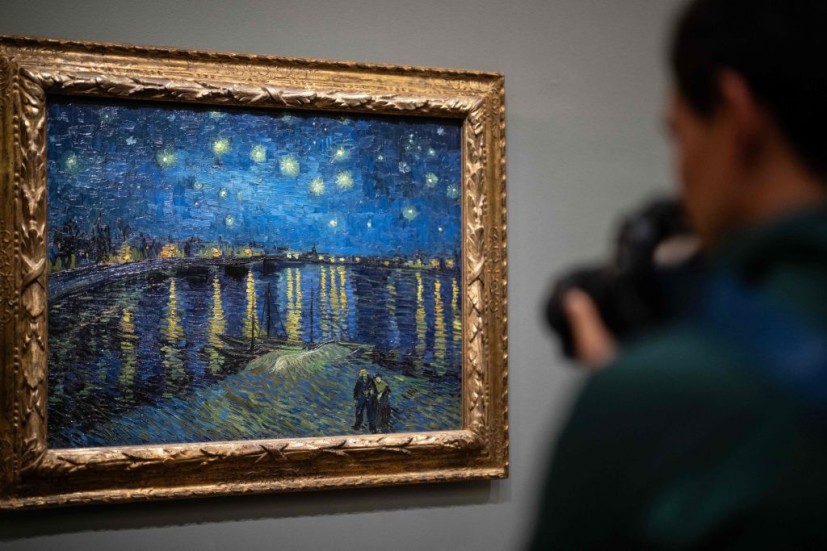
Van Gogh's Starry Night over the Rhône is back in Arles, 136 years after it was painted. Loaned by the Musée d'Orsay, it is the centerpiece of the exhibition, "Van Gogh and the Stars," mounted by the Fondation Vincent van Gogh Arles.
It was in 1888 that Vincent van Gogh famously moved to Arles to establish an artistic retreat. The region changed his artistic output, and has since been closely associated with the painter. Shortly after arriving, van Gogh became obsessed with painting the night sky, writing to his sister, Wilhelmina: "I absolutely want to paint a starry sky. Often it seems to me that the night is even more richly coloured than the day... And without insisting any further, it is obvious that to paint a starry sky it is not at all enough to put white dots on blue black."
In late September, he completed Starry Night over the Rhône, with which he seemed completely happy. The following year saw the arrival of Gauguin, an argument that famously caused van Gogh to cut off his left ear, his admittance into an asylum, and the creation of his other night sky painting, Starry Night.
Bice Curiger, co-curator of "Van Gogh and the Stars," calls Starry Night over the Rhône "an extraordinary icon in the history of art, a masterpiece."
Of its legacy, the Fondation Vincent van Gogh Arles writes on its website: "The influence of this nocturnal scene has been considerable, as shown in the work of subsequent artists such as Edvard Munch, Kasimir Malevitch, Georgia O'Keeffe, Helen Frankenthaler and other major figures who are featured in the exhibition."
"Van Gogh and the Stars" marks the Fondation's 10th anniversary, and the 150th of Impressionism. Featuring 165 works from 78 modern and contemporary artists, all inspired by Van Gogh's starry nights, the exhibition "will shed new light on Van Gogh's work, highlighting its legacy and unshakeable strength." "Van Gogh and the Stars" runs from June 1 to August 25.